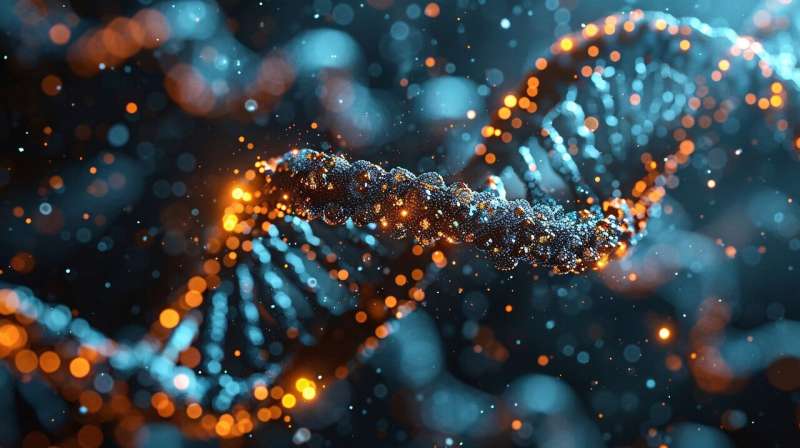Breakthrough in 3D Genome Organization: Linking DNA Architecture to Fertility and Cancer

Kyoto University researchers discover STAG3-cohesin, a new DNA organizer crucial for sperm development and with potential implications for fertility and cancer treatment.
A pioneering study by researchers at Kyoto University has uncovered a novel DNA-organizing complex called STAG3-cohesin, which plays a vital role in shaping the genome of germ cells, specifically spermatogonial stem cells (SSCs). This complex helps establish the distinctive DNA architecture necessary for sperm development, with significant implications for fertility in mice. When STAG3 is absent, SSCs fail to differentiate correctly, resulting in fertility issues.
The research further reveals that in humans, STAG3 is highly expressed in immune B cells and B-cell lymphomas, a type of blood cancer. Experimental blocking of STAG3 in cancer cells resulted in slowed growth, highlighting its potential as a therapeutic target. These findings, published in Nature Structural & Molecular Biology, suggest that STAG3-cohesin not only functions as a key regulator of DNA organization in germ cells but also influences gene activity regulation across different cell types.
The study explores the unique DNA boundary features of SSCs, which have previously been poorly understood due to their weak boundaries and distinct DNA reorganization during development. Using advanced protein mapping techniques, the researchers discovered that RAD21, a core cohesin component, partners with STAG3 during the mitotic phase, unlike in typical cells where it pairs with STAG1 or STAG2. Their experiments demonstrate that STAG3-cohesin is responsible for the weak DNA boundaries seen in SSCs and is essential for progression from spermatogonial stem cells to mature sperm.
Moreover, the findings indicate that alterations in STAG3 levels can influence the balance between stem cell maintenance and differentiation, revealing a potential mechanism for regulating germ cell development. The implications extend to understanding how DNA organization impacts fertility and suggests that manipulating STAG3 could offer new avenues for treating infertility. Additionally, the observed growth suppression in B-cell lymphomas upon STAG3 inhibition points toward its potential in cancer therapy.
Led by Prof. Mitinori Saitou and colleagues, this research advances our understanding of the molecular architecture of germ cells, emphasizing the importance of specialized cohesin complexes. As STAG3 functions in mitotic cells, further investigations could unlock new insights into DNA boundary formation and gene regulation in both reproductive and cancer biology.
Stay Updated with Mia's Feed
Get the latest health & wellness insights delivered straight to your inbox.
Related Articles
Targeting a Key Protein to Prevent Food Allergy Disorders
Researchers at Tel Aviv University have identified the protein TSLP as a critical factor in the development of food allergy-related conditions like Eosinophilic Esophagitis. Blocking TSLP could lead to new therapeutic approaches for managing these chronic inflammatory diseases.
Objective Insights into the Effects of Hyaluronic Acid Fillers through Volumetric Study
A groundbreaking study using 3D imaging reveals the immediate and long-term volumetric effects of hyaluronic acid fillers in facial rejuvenation, highlighting regional variations and patient satisfaction outcomes.
Gut Microbes as a Key to Enhancing Cancer Immunotherapy Response Through Exercise
New research uncovers how exercise reshapes the gut microbiome to produce compounds like formate, enhancing cancer immunotherapy response and improving patient outcomes.
Impact of Food Additives During Pregnancy on Offspring Gut Health and Inflammation Risk
Maternal consumption of common food emulsifiers can alter offspring gut microbiota, increasing the risk of inflammatory diseases and obesity later in life, according to recent mouse studies.



